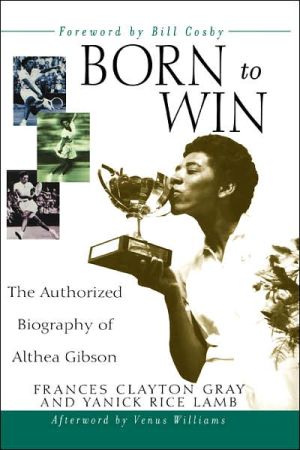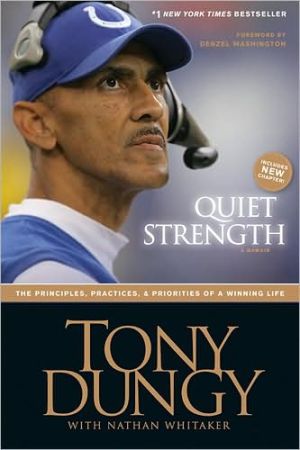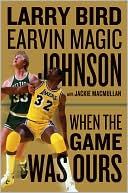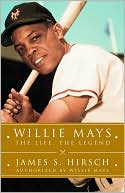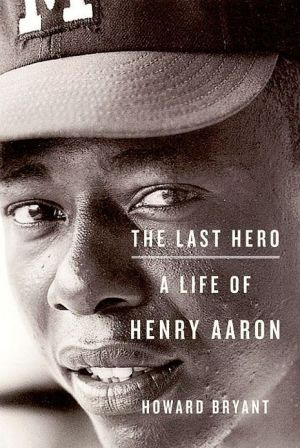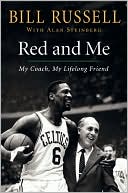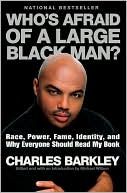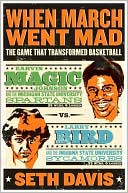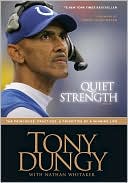Althea Gibson
Born to Win is the first and only fully authorized biography of the late great Althea Gibson, the first African American to break the color line in tournament tennis. Cowritten by Frances Clayton Gray, who was Gibson's confidante and caretaker and is now executor of her estate, and journalist Yanick Rice Lamb, this authorized biography sheds new light on Gibson, from her childhood in Harlem and her ten-year reign as champion of the all-black American Tennis Association to her historic 1950...
Search in google:
"I knew that I was an unusual, talented girl through the grace of God. I didn’t need to prove that to myself. I only wanted to prove it to my opponents."—Althea Gibson Born to Win is the first and only fully authorized biography of the late great Althea Gibson, the first African American to break the color line in tournament tennis. Cowritten by Frances Clayton Gray, who was Gibson’s confidante and caretaker and is now executor of her estate, and journalist Yanick Rice Lamb, this authorized biography sheds new light on Gibson, from her childhood in Harlem and her ten-year reign as champion of the all-black American Tennis Association to her historic 1950 debut at Forest Hills and her momentous victories of 1957 and 1958, when she swept both Wimbledon and the U.S. Open. This riveting account reveals how Gibson distinguished herself as a champion in a long and diverse athletic career, helping to pave a path for such modern-day sports phenomena as Tiger Woods and Venus and Serena Williams. A strong-willed child who skipped school frequently and had a reputation for being a tough girl, Gibson nevertheless developed a solid work ethic and a desire for independence—and was a natural athlete to boot. You’ll follow her as she picks up a tennis racket for the first time and goes on to compete in her first tournament, setting the stage for a remarkable journey. At 5 feet 11, Gibson had the height, speed, and reach to dazzle a crowd by returning shots that seemed guaranteed to get away, and she devised brilliant strategies to zero in on her opponents’ weaknesses. She garnered international acclaim, earned numerous titles, and set records that have yet to be broken. Yet, while people of all colors celebrated her triumphs, Althea also battled discrimination, naysayers who questioned her wins, and reporters who wondered whether success was going to her head. Even as she broke barriers, others would fall into place. You’ll hear from Gibson herself, as well as her family and supporters, as she faces numerous challenges that sharpen her game, strengthen her confidence, and test her resolve. You’ll also see how an ongoing series of personal disappointments, slights, and setbacks stoked an underlying bitterness in Gibson—even as she continued to make contributions that transcended race and gender and set an example for younger players. And you’ll discover how she helped revolutionize the entire universe of sports, making strides that have benefited everyone from Billie Jean King to Mia Hamm to Arthur Ashe. Complete with more than 35 rare photographs, some of which are being presented for the first time, Born to Win deftly and reverently traces Althea Gibson’s shining legacy from the hard times to the glory years, providing inspiration for generations to come.Publishers WeeklyThe first African-American woman to win both Wimbledon and the U.S. Open, Gibson (1927-2003) was one of the most gifted athletes, male or female, of the second half of the 20th century. Despite her talent, which reached its zenith in the 1950s and early '60s, little has been written about her, save for her own 1958 autobiography, long out of print. Unfortunately, this effort from Gray, cofounder of the Althea Gibson Foundation, and journalist Lamb comes up short. While all the highlights of Gibson's rise from the streets of Harlem to Wimbledon, from professional tennis to professional golf are here, there's little insight into Gibson herself. This is particularly disappointing since Gray was a Gibson confidante who had the athlete's friends' and family's cooperation. Gray tends to gush about Gibson's many triumphs while largely overlooking her shortcomings. She even glosses over the difficult physical and financial situation Gibson faced during the 1990s after suffering a stroke, delivering a superficial look at this trailblazing woman. A more rounded and better written portrait of Gibson appears in Bruce Schoenfeld's The Match: Althea Gibson & Angela Buxton: How Two Outsiders One Black, the Other Jewish Forged a Friendship and Made Sports History, which Amistad published in June. 40 b&w photos. (Sept.) Copyright 2004 Reed Business Information.
Born to Win\ The Authorized Biography of Althea Gibson \ \ By Frances Clayton Gray Yanick Rice Lamb \ John Wiley & Sons\ ISBN: 0-471-47165-8 \ \ \ Chapter One\ "A Traveling Girl" \ My friends and I used to regard school as just a good place to meet and make our plans for what we would do all day.\ This time, Althea had really worked his last, good nerve. Daniel Gibson came at his eldest daughter as if she were the Brown Bomber-with every ounce of his 190 pounds behind his fists. He punched Althea so hard that he sent her tall, skinny behind sprawling down the hall outside the family's five-room walk-up in the heart of Harlem. She hadn't just skipped school or stayed out all night; she had been gone for a few days. So Gibson didn't even bother looking for a strap or snatching off his belt. What was the use? No matter how hard he whipped Althea, she always refused to cry. Even when he punched her that time, she pulled herself off the floor, socked him in the jaw, and made use of all the boxing lessons he had given her by fighting him as if she really were the son he had wanted as his firstborn.\ Whenever he whipped her, Althea merely gave her father the silent treatment and continued to do what she felt like doing when she felt like doing it. But she wasn't feeling junior high school and it had been the same in elementary school at P.S. 136, both of which often lost out to softball games in Central Park and other diversions. Althea couldn'tsit still. She was in her own words "a traveling girl." School was too confining and boring to be worthy of more than cameo appearances. She paid a high price for playing hooky-paddlings in the classroom, whippings from her father so severe that she'd bypass home for the police precinct, and that punch in the face. But it was a price she was willing to pay to see all that Depression-era New York had to offer. "We'd climb over the fence to a playground, and we'd swing way up, two on a swing," Althea reminisced many years later. "And we'd sneak in the movies." She would also travel the subways night and day; catch a show at the Apollo; shoot some hoops; or lift some ice cream, fruit, or sweet potatoes for roasting.\ "My parents were doing their best to raise me, but I wouldn't let them," Althea recalled. "I just wanted to play, play, play. My mother would send me out with money for bread, and I'd be out from morning to dark-and not bring home the bread. I had fun, fun, fun!"\ All of this wandering around caught the attention of child welfare officials, who placed her in a home for wayward girls as a ward of the state in lieu of sending her to a reformatory. But it also prepared her for a life on the move as an athlete, playing tennis and golf in far-flung corners of the earth that were quite different from her Harlem neighborhood and especially her birthplace on a cotton farm in Silver, South Carolina. These early days shaped her restless personality, competitive spirit, and zest for life.\ It all started on August 25, 1927, when Althea came screaming into the practiced hands of her great-aunt Mattie Davis, a "middoctor" who had delivered many babies throughout Clarendon County. She was born to Annie Bell and Daniel Gibson in a four-room cabin, where they lived with her paternal grandparents, Junius and Lou Gibson, and at least six of their children from current and previous marriages. "Us children knew better than to go near the door," which was off limits, Mary "Minnie" McFadden recalls of her niece's birth.\ Word spread all over Silver about "Dush" and Annie Bell's firstborn-"a big, fat one" at eight pounds and long, too. Since Silver wasn't but that big, word didn't have too far to go. Both Annie Bell and Dush had grown up in Silver, which folks have always described as less of a town and more of a community. Silver, named for John S. Silver, cofounder of the Charleston, Sumter & Northern Railroad, stretched maybe three miles in any direction. Everybody knew everybody and everything, since most of them could say they were cousin so-and-so's daddy's sister's people whether they were Gibsons or Tindals or Stukes or Durants or Bethunes or Washingtons. Annie Bell was a Washington.\ "While we were courting, I used to walk a mile over the bridge to see her once a week; every Sunday night I went," Dush once told Althea. "That's all her people would allow." Once a week wasn't enough for the young sweethearts. They would sneak around behind their parents' backs to see each other. "Mama used to talk about how they used to pick cotton, and I guess Daddy, he was making corn liquor in the woods somewhere, and they would always run across each other some sort of way," remembered Daniel Jr., better known as Bubba. "It must have been romantic, because something developed out of it." By the time they jumped the broom, Dush was nineteen and Annie Bell was eighteen. She kept house, while he farmed cotton and corn on the land passed down to his father, Junius, from his grandfather, January.\ January Gibson is the oldest known member on the paternal side of Althea's family. "His mother came over here on the ship," according to his grandson, Thelmer Bethune, the sole surviving child of Mary Gibson Bethune, the fifth of January's eleven children. The story told to Bethune, Dush's first cousin, and other Gibsons was that January was born to a sixteen-year-old girl and a slave owner who had purchased her on an auction block down on the coast in Charleston. The slave owner told his wife that he had deprived the girl of breakfast and supper for disrespecting him but that he was ready to feed her in exchange for an apology. He gave her not only a meal but also his seed, fathering January and eventually a daughter. The slave and her two children were later sold to another slave owner, Thelmer says. "And then that slave owner, he had two children by her."\ Under the chattel for W. J. Gibson, Clarendon County's 1860 slave schedule lists an eight-year-old mulatto boy and a twenty-four-year-old black woman who fit the age span that Thelmer described. A five-year-old girl is also recorded among Gibson's eight slaves. Two decades later and seventeen years after the ink dried on the Emancipation Proclamation that Abraham Lincoln signed to free slaves like January, his name shows up on the 1880 census as the head of his own household. January is listed as a twenty-nine-year-old farmer with a wife, Adrianna, twenty-seven, and four children, including two-year-old Junius, Althea's grandfather. The 1880 census also lists a forty-five-year-old single black woman named Rachel, living with five children ranging in age from one to fifteen. January's and Rachel's names turn up again on the tax rolls of 1898. These and later public records consistently show that January was probably born around 1852 and most likely in the month that bears his name, a common practice at the time. The last reference for Rachel, who may or may not have been January's mother, indicates that she was probably born in 1835 and lived at least until the age of sixty-three.\ It is known, however, that January died on January 12, 1928, four and a half months after the birth of his great-granddaughter Althea, according to the inscription on his tombstone at Mount Zero Missionary Baptist Church in Paxville, just north of Silver. Over his grave, a limestone obelisk, dark and mottled along the edges by decay, lists his birth as occurring in 1842-ten years earlier than decades of census records show. Historians note that people often "aged" more than once a year because of the reverence bestowed upon elders. Exact ages are also iffy due to faulty memories or, more typically, nonexistent birth and death records. Whether January was seventy-six or eighty-six, he lived a long and fruitful life, boasted descendants who took to heart the inscription on his tombstone: "Gone but not forgotten."\ January was a farmer, a Freemason, and a deacon who served forty-six years at Mount Zero, which was founded on the land owned by James E. Tindal, for whom his first wife, Adrianna Tindal, was named. Shortly after the Civil War, newly freed slaves had taken to the woods to hold worship services for what became Mount Zero. They gathered at Bush Arbor near Tindal Mill Pond, where many Gibsons were baptized well into the 1970s, Minnie McFadden remembers. Like January, some of his descendants became leaders in local churches, including the Reverend Purdy Gibson, a grandson who was pastor of Friendship AME Church, founded on the Ridgill plantation in 1901. January also established a legacy of land ownership that survives today and grew acres upon acres of corn, cotton, and tobacco. "He couldn't read or write, but during his time he bought and paid for four hundred and sixty-eight acres of land," Thelmer pointed out with pride. "I tend some of it now." According to county tax records in 1898-thirty years before January's death-he owned 193 acres and four buildings worth $650 plus $200 in other possessions. That November, he paid $13.11 in taxes on his $850 property. Historians say his holdings were significant for a Negro man of that era.\ Through the land, January provided sustenance, homesteads, and a way for his heirs to put in an honest day's work. Althea would eventually develop a work ethic as strong as her great-grandfather's and a desire for self-sufficiency that some came to view as an obsession with making money. January's holdings also created a buffer against Jim Crow for some of his descendants, but unfortunately not for Althea, who had to withstand the racism in the sports world alone. All over Clarendon County, for instance, Negroes lost jobs, banking privileges, access to farming equipment, and customers in the 1940s and 1950s for supporting school equality and integration resulting from Briggs v. Elliott, the first of five lawsuits that made up the 1954 landmark Supreme Court case Brown v. the Board of Education.\ But Thelmer says that he was able to withstand the pressure to simply go along to get along. Thanks to January's holdings, he was his own man with his own land-even if he sometimes had little to show financially after meeting his expenses. "I'm the first man that sign the petition to have the schools," noted Thelmer, now in his nineties and one of Althea's oldest living relatives. "They couldn't hurt me because I was on my own place." January also provided land for Oak Grove School, which Thelmer and the other Gibson children attended when they weren't farming. "Sometimes I'd get two lessons in a week," Thelmer recalled wistfully. "I made up my mind that if I ever growed up and get to be a man, I'm going to see to it that my children got a better education."\ Dush, Minnie, and Junius's other children learned to read and write. Minnie described attending a school for Negro children called Ram Bay until the fourth grade and then the two-room Hamilton-Brailsford Road School at the old Gum Springs Baptist Church. "School lasted three months," she said. The rest of the time she joined Dush on the farm, helping their father, Junius, milk their two cows, plant wheat for flour, chop cotton, and pick corn, tobacco, and soybeans-some of which they sold. Their older sisters would transform the fruits of their labor into hearty meals, keeping the wood-stove burning to cook peas, corn bread, collard greens, and especially sweet potatoes, a family favorite. "You don't have that; you don't have nothing," said Minnie, who was also partial to bread with milk and syrup. "We used to raise our own chickens," she added. "The goats would walk up the steps and come right in the house. They would get in the bed, too!"\ Junius stretched the meals by hunting. A prankster with a "devilish" streak that made its way down to his granddaughter Althea and her siblings, nieces, and nephews, Junius once passed off a fox to his wife as a sand hill coon. "Mama had it cooked up real good with black pepper and onions and stuff," Minnie chuckled, her eyes watering from laughter as she retold the story. "Then Papa told her, 'Lou, that ain't been no coon; that was a fox.' Boy, did Mama get mad and get on Papa! I don't think I ever seen her mad."\ Since Junius wasn't particularly fond of farming, a good deal of it fell to Dush and the rest of his offspring. Sometimes Junius found other ways to occupy his time and bring in extra money. "He used to go into the woods and saw blocks and logs and take them to Sumter to sell them," Minnie remembered. Silver was smack dab in the middle of logging and lumber operations stretching from Sumter to the north and the Santee River farther south. Some of the railroads that serviced them paid local farmers and woodsmen roughly 12 cents for each pine or cypress crosstie.\ When Junius wasn't chopping wood or hunting, he made beer and moonshine. "He used to make some nice moonshine liquor," Minnie said. "People would rather buy that than buy label liquor." Mattie Bryant, Althea's cousin and childhood running buddy, was even more emphatic. "He made the best corn whiskey in the world," she said of their grandfather. "Everybody came to him." Thelmer pointed out that Junius wasn't alone. "Plenty of people were making whiskey," he said. "All they do is have to duck the law; that's all." At one point, as many as forty thousand people made a living as "bootleggers, moonshiners, and rumrunners" in South Carolina, according to the historian Walter Edgar.\ Althea's other grandfather, Charles Canty Washington, also made moonshine on the side. But Charlie, a loud-talking man, was mostly a father, a farmer, and a preacher. "He was a good grandfather and provider," recalled Althea's first cousin Agnes "Aggie" Green, who was raised by Charlie and his second wife, Miss Josephine, after her mother died when she was a baby. "My grandfather ran a big farm," said Aggie, the daughter of Willie Washington, one of Annie Bell's older brothers. Aggie described Charlie as a tenant farmer, working the land owned by Levy Tindall with help at one point from Althea's father, Dush. "We worked so hard until I couldn't think straight," Aggie reflected on her days in the field, picking everything from string beans to watermelon. Charlie didn't have his own church, but he was a popular preacher who stirred souls with his powerful delivery of the Word. He tended to preach close to home at Friendship AME, which was only a mile from his house. Aggie still worships there along with other relatives, traveling seventy-five miles east from Columbia, South Carolina.\ Charlie Washington also ran one of Silver's three stores. "He was the first man opened up a store in Silver," Thelmer said. A master butcher, he sold everything from dresses and shoes to beef and fish that arrived each Friday by train from Charleston. As a girl, Aggie cooked fish and sold clothing at her granddaddy's store, which was located in the center of whatever hustle and bustle the small town could muster up. At its peak, Silver had the trio of stores, a sawmill, a corn mill, a cotton gin, a post office, and a train depot with an agent.\ \ Continues...\ \ \ \ Excerpted from Born to Win by Frances Clayton Gray Yanick Rice Lamb Excerpted by permission.\ All rights reserved. No part of this excerpt may be reproduced or reprinted without permission in writing from the publisher.\ Excerpts are provided by Dial-A-Book Inc. solely for the personal use of visitors to this web site. \ \
ForewordvAcknowledgmentsviii1"A Traveling Girl"12Holding Court243"Champion of Nothing"594"At Last! At Last!"855Playing New Notes1126Turning Pro1257Swing Time1378The Comeback Kid1629Ambassador for Excellence17210Revolutionizing the Sports World18611A Private Life, A Public Legacy201Epilogue215Afterword216Career Achievements218Notes220Index240
\ Publishers WeeklyThe first African-American woman to win both Wimbledon and the U.S. Open, Gibson (1927-2003) was one of the most gifted athletes, male or female, of the second half of the 20th century. Despite her talent, which reached its zenith in the 1950s and early '60s, little has been written about her, save for her own 1958 autobiography, long out of print. Unfortunately, this effort from Gray, cofounder of the Althea Gibson Foundation, and journalist Lamb comes up short. While all the highlights of Gibson's rise from the streets of Harlem to Wimbledon, from professional tennis to professional golf are here, there's little insight into Gibson herself. This is particularly disappointing since Gray was a Gibson confidante who had the athlete's friends' and family's cooperation. Gray tends to gush about Gibson's many triumphs while largely overlooking her shortcomings. She even glosses over the difficult physical and financial situation Gibson faced during the 1990s after suffering a stroke, delivering a superficial look at this trailblazing woman. A more rounded and better written portrait of Gibson appears in Bruce Schoenfeld's The Match: Althea Gibson & Angela Buxton: How Two Outsiders One Black, the Other Jewish Forged a Friendship and Made Sports History, which Amistad published in June. 40 b&w photos. (Sept.) Copyright 2004 Reed Business Information.\ \
